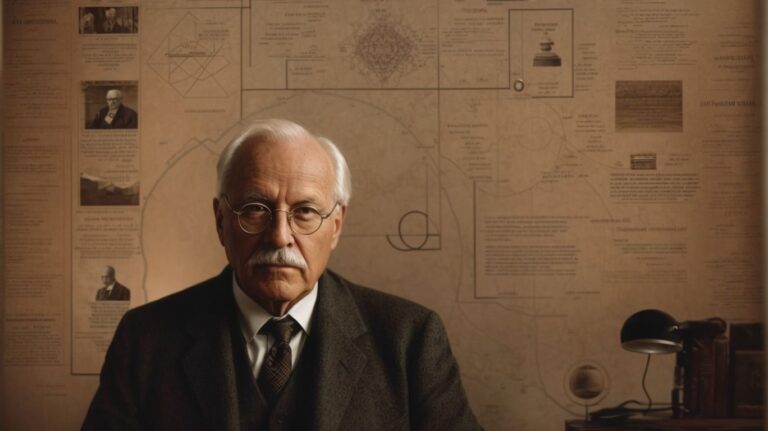Abraham Maslow, a prominent figure in the world of psychology, is best known for his groundbreaking theory of human motivation – the Hierarchy of Needs. This theory outlines the five essential levels of needs that drive human behavior and ultimately lead to self-actualization.
Over the years, Maslow’s work has had a profound impact on the field of psychology, shaping the concept of self-actualization and influencing humanistic psychology.
In this article, we will delve into the basics of Maslow’s Hierarchy of Needs, its implications in modern society, and its influence on humanistic psychology.
Contents
- 1 Who is Abraham Maslow?
- 2 The Basics of Maslow’s Hierarchy of Needs
- 3 The Impact of Maslow’s Hierarchy of Needs in Psychology
- 4 The Relevance of Maslow’s Hierarchy of Needs in Modern Society
- 5 Maslow’s Influence on Humanistic Psychology
- 6 Frequently Asked Questions
- 6.1 What are the key contributions of Maslow in the field of psychology?
- 6.2 What is Maslow’s hierarchy of needs and how does it impact human behavior?
- 6.3 How did Maslow’s self-actualization theory revolutionize the study of human behavior?
- 6.4 Can you explain Maslow’s concept of peak experiences?
- 6.5 How has Maslow’s work influenced modern psychology?
- 6.6 Why is it important to unravel Maslow’s contributions in psychology?
Who is Abraham Maslow?
Abraham Maslow, a prominent figure in the field of psychology, is known for his groundbreaking work in humanistic psychology and the development of the hierarchy of needs theory.
Abraham Maslow was born on April 1, 1908, in Brooklyn, New York. He had a strong academic background, earning his Bachelor’s, Master’s, and Ph.D. in psychology from the University of Wisconsin. Maslow was heavily influenced by the works of psychologists like Kurt Goldstein and Alfred Adler.
One of his most significant contributions to psychology is the theory of self-actualization, which emphasizes personal growth and fulfillment. His hierarchy of needs theory, often depicted as a pyramid, illustrates the different levels of human needs, from basic physiological requirements to self-actualization.
Throughout his career, Maslow published numerous influential works, including ‘Motivation and Personality’ and ‘Toward a Psychology of Being.’ He also held prestigious positions in academia and psychology organizations, further solidifying his legacy in the field.
The Basics of Maslow’s Hierarchy of Needs
Maslow’s Hierarchy of Needs is a foundational concept in psychology that outlines the five essential levels of human needs leading to self-actualization.
At the core of Maslow’s theory is the idea that individuals are motivated by fulfilling basic needs before advancing to higher levels of psychological development. The hierarchy begins with physiological needs, such as air, water, and food, as the primary requirement for survival. Once these needs are met, individuals move on to safety needs, seeking security and stability in their lives. The subsequent levels, in ascending order, include belongingness and love needs, esteem needs, and ultimately, self-actualization.
Notably, Maslow’s work is built upon the foundation laid by other prominent psychologists and scholars, such as Kurt Goldstein, who explored the concept of self-actualization before Maslow’s formulation of the hierarchy. It was Maslow who refined and popularized the idea, emphasizing the sequential nature of human needs and the innate drive towards personal growth and fulfillment.
What are the Five Levels of Maslow’s Hierarchy of Needs?
Maslow’s Hierarchy of Needs consists of five levels, starting with physiological needs, followed by safety needs, love/belonging needs, esteem needs, and culminating in self-transcendence needs.
Physiological needs are the most basic requirements for human survival, such as air, water, food, and shelter. These needs must be met first before progressing to higher levels of the hierarchy.
Safety needs involve feeling secure and stable in one’s environment, encompassing physical safety as well as financial and health security. Fulfilling these needs creates a sense of predictability and control.
Love and belonging needs are centered around interpersonal relationships, including friendships, intimacy, and family bonds. These connections provide emotional support, acceptance, and a sense of belonging.
How do the Levels of Maslow’s Hierarchy of Needs Interact?
The levels of Maslow’s Hierarchy of Needs interact in a sequential manner, with each level building upon the fulfillment of the previous one, ultimately leading to self-actualization.
At the foundational level of the hierarchy, individuals strive to satisfy their physiological needs such as food, water, and shelter. Once these basic requirements are met, they naturally progress to fulfilling safety needs, seeking security and stability in their lives.
With a sense of security established, individuals then focus on belongingness and love needs, forming interpersonal relationships and seeking acceptance in social groups. This social connection provides a sense of belonging and acceptance, which is crucial for emotional well-being.
Once social needs are met, individuals strive for esteem needs, such as recognition, achievement, and respect from others. Fulfillment of these needs boosts confidence and self-worth, paving the way for the pursuit of self-actualization.
The Impact of Maslow’s Hierarchy of Needs in Psychology
Maslow’s Hierarchy of Needs has had a profound impact on the field of psychology, shaping research studies, influencing scholars, and providing a historical perspective on human motivation.
Developed by psychologist Abraham Maslow in 1943, this theory posits that individuals are motivated to achieve certain needs in a hierarchical order.
Starting from basic physiological needs like food and shelter, the hierarchy progresses through safety, love and belonging, esteem, and culminates in self-actualization.
This framework has been instrumental in understanding human behavior and motivation across various contexts.
It has guided studies on workplace satisfaction, educational settings, and even in marketing strategies to appeal to consumer desires.
By emphasizing the importance of fulfilling basic needs before moving on to higher aspirations, Maslow’s theory revolutionized psychological research and laid the groundwork for future theories on human motivation.
How did Maslow’s Hierarchy of Needs Change the Field of Psychology?
Maslow’s Hierarchy of Needs revolutionized the field of psychology by providing a holistic framework for understanding human motivation, leading to its widespread adoption in psychology textbooks and management education.
By delineating a hierarchy of five essential needs starting from physiological needs at the base to self-actualization at the pinnacle, Maslow offered a profound insight into what drives human behavior. This model not only helped psychologists comprehend individuals’ motivations but also found applications in various fields including marketing, education, and healthcare.
The simplicity and universality of Maslow’s theory made it a cornerstone in psychology textbooks, influencing generations of students and professionals to consider the underlying human needs in personal and professional settings.
What are the Criticisms of Maslow’s Hierarchy of Needs?
Despite its significance, Maslow’s Hierarchy of Needs has faced criticisms from various scholars and critics who have questioned its universality, applicability, and potential misinterpretations.
One major critique revolves around the assumption of universality in Maslow’s theory. Critics argue that the hierarchy is based on Western cultural values and may not be applicable to all societies worldwide.
Some scholars believe that the rigid five-tier structure oversimplifies human motivation, neglecting the complexities and individual differences in needs.
Alternative theories such as Self-Determination Theory propose a more dynamic and context-dependent approach to understanding human needs, challenging the linear progression suggested by Maslow’s model.
The Relevance of Maslow’s Hierarchy of Needs in Modern Society
Maslow’s Hierarchy of Needs remains relevant in modern society as a framework for personal development, self-actualization, and understanding the fundamental human motivation that drives individual behavior.
The concept, introduced by psychologist Abraham Maslow in 1943, postulates that individuals are motivated to fulfill a hierarchy of needs, starting from basic physiological requirements like food and shelter, up to higher-level needs such as love, esteem, and self-actualization. In today’s fast-paced world, this theory serves as a roadmap for individuals seeking personal growth and fulfillment. By prioritizing these needs in ascending order, people can better understand their motivations, set goals, and strive towards a more meaningful and satisfying life.
How is Maslow’s Hierarchy of Needs Applied in Various Fields?
Maslow’s Hierarchy of Needs finds applications across diverse fields such as education, career development, and management, providing insights into human motivation and behavior.
For example, in the realm of education, understanding that basic physiological needs must be met before higher-level needs can be addressed helps educators create an environment conducive to learning. In career guidance, this hierarchy assists individuals in recognizing whether their current job fulfills their self-actualization needs or if they should seek new opportunities. In organizational management, recognizing and addressing the needs of employees at different levels of the hierarchy can boost morale, productivity, and overall satisfaction.
What are the Implications of Maslow’s Hierarchy of Needs in Personal Development?
Understanding Maslow’s Hierarchy of Needs has profound implications for personal development, emphasizing the importance of self-transcendence and achieving fulfillment beyond basic needs.
After fulfilling physiological and safety needs, individuals are driven to fulfill psychological needs such as belongingness and self-esteem. Once these are met, the focus shifts towards self-actualization – pursuing personal growth, creativity, and realizing one’s full potential.
Beyond self-fulfillment lies the concept of self-transcendence, where individuals go beyond their interests and needs to contribute to the betterment of society and humanity. This marks a significant shift from individual growth to a broader perspective of interconnectedness and community well-being.
How has Maslow’s Hierarchy of Needs Shaped the Concept of Self-Actualization?
Maslow’s Hierarchy of Needs has been instrumental in shaping the concept of self-actualization and influencing the positive psychology movement by emphasizing personal growth, fulfillment, and realizing one’s full potential.
Self-actualization, the pinnacle of Maslow’s pyramid, represents the realization of an individual’s innermost abilities and potential, leading to a deep sense of satisfaction and purpose in life. In the realm of positive psychology, the focus shifts from pathology to well-being and the actualization of one’s strengths and virtues, aligning closely with the principles of self-actualization. Individuals who strive for self-actualization are driven by an innate desire for continuous self-improvement and the pursuit of peak experiences that transcend mere survival or routine existence.
Maslow’s Influence on Humanistic Psychology
Abraham Maslow‘s profound influence on humanistic psychology has been pivotal in shaping the Positive Psychology Movement and fostering a deeper understanding of human potential and well-being.
One of Maslow’s most significant contributions was his hierarchy of needs theory, which emphasized the importance of fulfilling basic physiological and safety needs before progressing to higher levels of self-actualization. This groundbreaking framework revolutionized psychology by shifting focus from pathology to human growth and fulfillment.
His emphasis on self-actualization and peak experiences has inspired generations of psychologists and individuals to strive for personal growth and fulfillment in various aspects of life. Maslow’s work laid the foundation for positive psychology, a field dedicated to studying human strengths and virtues to enhance overall well-being.
His impact is evident in scholarly journals like the Journal of Humanistic Psychology, which continue to publish research and articles that align with his humanistic principles and values.
What is Humanistic Psychology and How is it Related to Maslow’s Work?
Humanistic psychology, closely linked to Abraham Maslow’s work, emphasizes individual growth, self-actualization, and human potential, with roots in Maslow’s pioneering research at the University of Wisconsin.
This psychological approach values the whole person, focusing on subjective experiences and human emotions. It encourages individuals to strive for authenticity and self-discovery, celebrating unique qualities and inner strengths. Maslow’s principles underpin this perspective by highlighting the importance of fulfilling innate human needs, progressing towards self-actualization.
Humanistic psychology places great importance on personal development and well-being, promoting a positive view of human nature and emphasizing the significance of personal growth and realization.
What are the Key Principles of Humanistic Psychology?
The key principles of humanistic psychology include a focus on subjective experiences, personal growth, self-actualization, and a holistic approach to understanding human behavior, as championed by scholars like Maslow and institutions like Brandeis University.
Humanistic psychology emphasizes the uniqueness of individuals, highlighting their capacity for creativity, free will, and self-determination. This approach shuns the reductionist views prevalent in behaviorism and psychoanalysis, instead valuing the rich tapestry of human emotions and motivations. By valuing the person as a whole, humanistic psychology encourages individuals to strive towards their fullest potential and to seek fulfillment in all aspects of their lives.
Frequently Asked Questions
What are the key contributions of Maslow in the field of psychology?
Maslow’s hierarchy of needs, self-actualization theory, and concept of peak experiences are some of his noteworthy contributions in psychology.
What is Maslow’s hierarchy of needs and how does it impact human behavior?
Maslow’s hierarchy of needs is a theory that explains the five basic needs that motivate human behavior – physiological, safety, belongingness and love, esteem, and self-actualization. It suggests that fulfilling these needs can lead to personal growth and self-actualization.
How did Maslow’s self-actualization theory revolutionize the study of human behavior?
Maslow’s self-actualization theory proposed that individuals have an innate drive to reach their full potential and become the best version of themselves. This concept challenged the traditional focus on psychological disorders and instead emphasized on growth, creativity, and personal fulfillment.
Can you explain Maslow’s concept of peak experiences?
According to Maslow, peak experiences are moments of intense joy, wonder, and self-transcendence. These experiences occur when a person achieves self-actualization and can have a profound impact on one’s perspective and well-being.
How has Maslow’s work influenced modern psychology?
Maslow’s emphasis on self-actualization and humanistic psychology has greatly influenced modern approaches to understanding human behavior. His theories have been applied in various fields, such as education, management, and therapy.
Why is it important to unravel Maslow’s contributions in psychology?
Unraveling Maslow’s contributions allows us to understand the fundamental needs and motivations that drive human behavior. It also provides a framework for personal growth and self-actualization, leading to a better understanding of oneself and others.



